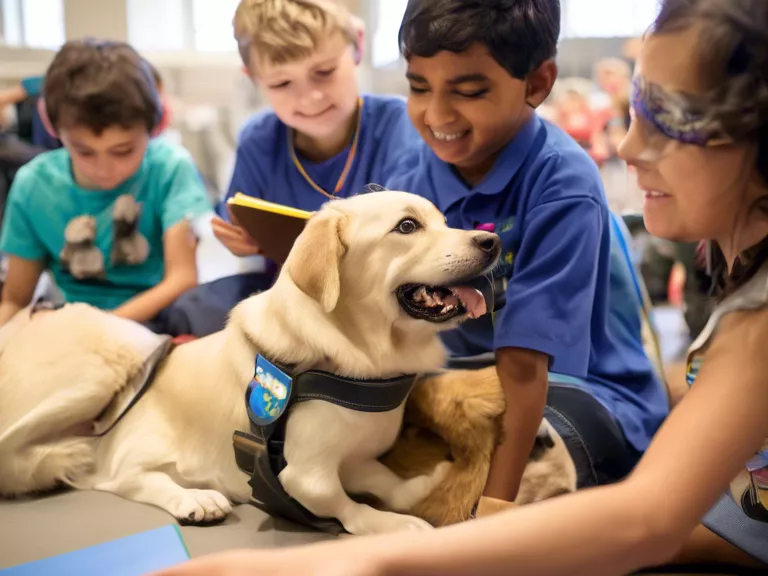
Introduction
In recent years, the integration of pets into educational environments has gained popularity for its numerous benefits. From reducing stress and anxiety to improving social skills and academic performance, the presence of animals in schools and learning centers has been shown to have a transformative effect on students. This article explores the concept of incorporating pets into education, examining the ways in which these furry companions can positively impact the learning experience.
The Science Behind the Connection
Research has shown that interactions with pets can have a profound impact on human well-being. The presence of animals has been linked to reduced levels of cortisol, a stress hormone, and increased production of oxytocin, a feel-good hormone. These biological responses contribute to a sense of calm and relaxation, creating an optimal environment for learning.
Benefits of Pet-Assisted Learning
Emotional Support and Stress Reduction
One of the primary benefits of incorporating pets into education is the emotional support they provide. Animals are known for their unconditional love and non-judgmental nature, which can help students feel more secure and at ease in the classroom. This support is particularly beneficial for students who may struggle with anxiety or other emotional challenges.
Improved Social Skills
Pets can also serve as a catalyst for improving social skills among students. Interacting with animals requires communication, empathy, and cooperation, skills that are essential for building positive relationships with others. Through activities such as feeding, grooming, and playing with pets, students can develop empathy and emotional intelligence.
Enhanced Academic Performance
Studies have shown that the presence of pets in educational settings can lead to improved academic performance. The calming effect of animals can help students focus better, retain information more effectively, and perform better on tasks requiring concentration. Additionally, the responsibility of caring for a pet can instill a sense of discipline and accountability in students.
Implementing Pet-Assisted Learning
Integrating pets into the educational curriculum requires careful planning and consideration. Schools must ensure that the animals are well-trained, vaccinated, and supervised at all times to ensure the safety and well-being of students. Teachers should also incorporate pet-related activities into lesson plans to maximize the educational benefits of having animals in the classroom.
Success Stories
Numerous schools and educational programs have successfully implemented pet-assisted learning initiatives with positive results. From therapy dogs supporting students with special needs to classroom pets fostering a sense of community and responsibility, the impact of animals in education is undeniable. These success stories serve as inspiration for other educational institutions looking to incorporate pets into their programs.
Conclusion
In conclusion, pets have the power to transform the educational experience for students in profound ways. From providing emotional support and reducing stress to improving social skills and academic performance, the benefits of incorporating animals into education are vast. By embracing pet-assisted learning, schools can create a more nurturing and engaging environment that promotes holistic development among students. As we continue to explore innovative approaches to education, the inclusion of pets is a valuable strategy that holds immense promise for enhancing the overall well-being and success of students.

